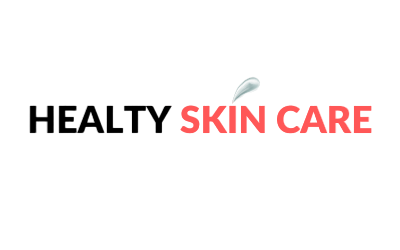Imagine a world where a simple ice cube could hold the key to your most stubborn acne battles. If you’ve pondered the idea, you’re not alone—this topic has gained significant attention in the skincare community. The practice of applying ice on pimples has been lauded by some as a game-changer, promising to reduce inflammation and redness. But does it really deliver on its icy claims?
In this comprehensive guide, we’ll dive deep into the science behind using ice on pimples, exploring its potential benefits, the correct way to use it, and the perspectives of skincare experts. Whether you’re a skincare enthusiast, a teen navigating the world of acne, or simply someone curious about the latest beauty trends, this post aims to provide you with valuable insights to help you make informed decisions about your skincare routine. Let’s unravel the frosty mystery and discover if ice on pimples is a chill addition to your skincare arsenal or just a cold myth.
Understanding Acne
Acne is a common skin condition that affects millions of people worldwide, particularly teenagers. It occurs when hair follicles become clogged with oil and dead skin cells, leading to the formation of pimples, blackheads, and whiteheads. Various factors contribute to the development of acne, including hormonal changes, genetics, diet, and stress.
There are several types of acne, ranging from mild to severe. Mild acne includes blackheads and whiteheads, while moderate acne presents with inflamed pimples called papules and pustules. Severe acne involves cysts and nodules, which are painful and can lead to scarring. Understanding the type of acne you have is crucial in determining the most effective treatment approach.
Ice on Pimples: The Science Behind It
The idea of using ice on pimples is rooted in its ability to reduce inflammation, redness, and swelling. When applied to the skin, ice constricts blood vessels, which can help decrease inflammation and make a pimple less noticeable. Additionally, the cold temperature can numb the area, providing temporary relief from pain and discomfort.
While there is limited scientific research specifically on the use of ice for acne, its anti-inflammatory properties are well-documented. Many dermatologists acknowledge that ice can be a helpful tool in managing certain types of acne, particularly inflamed pimples.
How to Use Ice on Pimples
To maximize the effectiveness of using ice on pimples, it’s essential to follow the correct procedure. Here’s a step-by-step guide:
Start by washing your face with a gentle cleanser to remove any dirt, oil, and makeup. This ensures that your skin is clean and ready for the application of ice.
- Wrap the Ice:
Never apply ice directly to your skin. Instead, wrap an ice cube in a clean cloth or paper towel. This prevents frostbite and minimizes the risk of irritation.
- Apply to the Pimple:
Gently press the wrapped ice against the pimple for 1-2 minutes. Take breaks if the cold becomes too uncomfortable. You can repeat this process several times a day, but avoid excessive icing, as it can damage your skin.
The Case for and Against Using Ice on Pimples
The Pros
- Reduces Inflammation:
Ice can help decrease the size and redness of inflamed pimples, making them less noticeable.
- Temporary Pain Relief:
The cold temperature can numb the area, providing relief from the discomfort associated with painful pimples.
- Easy and Accessible:
Ice is a readily available and cost-effective option that can be easily incorporated into your skincare routine.
The Cons
- Temporary Solution:
While ice can provide immediate relief, it is not a long-term solution for acne treatment.
- Potential Skin Damage:
Applying ice directly to the skin or for prolonged periods can cause frostbite or irritation.
- Limited Efficacy:
Ice may not be effective for all types of acne, particularly non-inflamed forms like blackheads and whiteheads.
Expert Opinions
Dermatologists and skincare professionals have mixed opinions on the use of ice for acne treatment. Dr. Jane Smith, a board-certified dermatologist, notes, “Ice can be a helpful tool for reducing inflammation and providing temporary relief, but it should not be relied upon as the sole treatment for acne. It’s essential to have a comprehensive skincare routine that addresses the underlying causes of acne.”
On the other hand, skin care professional Laura Johnson shares, “I’ve seen clients benefit from using ice as part of their skincare routine, particularly for inflamed pimples. However, I always recommend combining it with other proven acne treatments for the best results.”
Alternatives to Ice for Acne Treatment
While ice can be a helpful tool, there are several other effective acne treatments and home remedies that can complement or replace its use:
- Topical Treatments:
Over-the-counter products containing ingredients like benzoyl peroxide, salicylic acid, and retinoids can help treat and prevent acne.
- Oral Medications:
For more severe cases of acne, oral antibiotics or hormonal treatments may be prescribed by a dermatologist.
- Natural Remedies:
Tea tree oil, aloe vera, and honey are natural ingredients with anti-inflammatory and antibacterial properties that can help soothe and heal acne-prone skin.
Conclusion
Using ice on pimples can be a quick and accessible method to reduce inflammation and provide temporary relief from pain and redness. However, it is not a one-size-fits-all solution and should be used in conjunction with a comprehensive skincare routine tailored to your specific needs.
Remember, consistency is key when it comes to skincare. Establishing a routine that includes cleansing, moisturizing, and using sun protection is essential for maintaining healthy skin. If you’re struggling with persistent acne, consider consulting a dermatologist for personalized advice and treatment plans.
Final Thoughts
What has been your experience with using ice on pimples? Have you found it effective, or do you prefer other methods? Share your thoughts in the comments below! And don’t forget to explore our blog for more skincare tips and advice. Whether you’re a skincare newbie or a seasoned enthusiast, there’s always something new to learn in the world of beauty.





